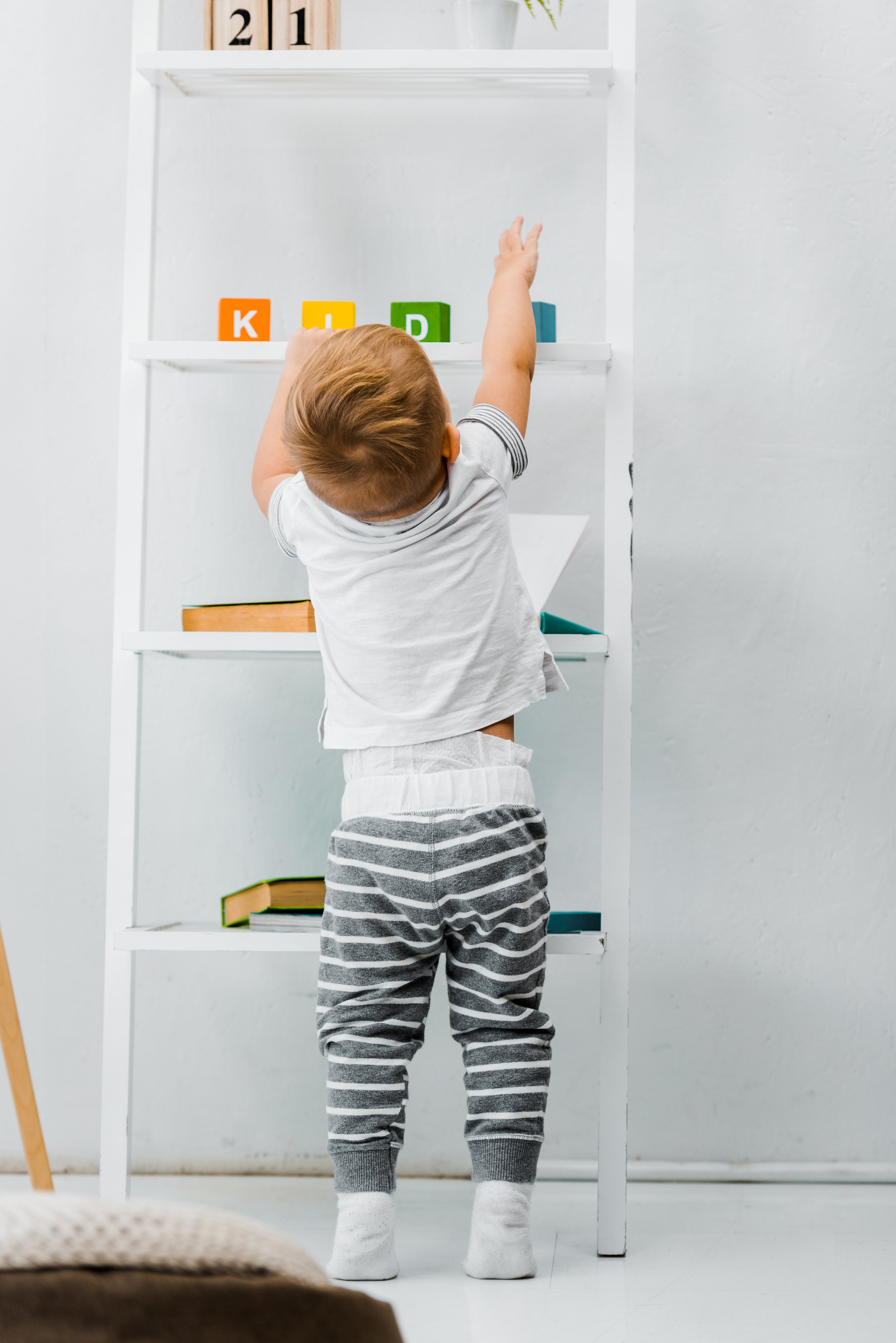Teaching Kids to Ask for Help
You may have noticed that your child becomes frustrated when they need help but don’t know how to ask for it. They may even resort to crying or screaming. Teaching your child to ask for help by handing you an object can help reduce their frustration and encourage them to initiate a request for help.
Learning to initiate this kind of purposeful communication is an important foundational communication skill for your child to learn. In this post you will learn tips for teaching your toddler to show you when they need help, watch examples of at home practice, and discover 3 simple activities for teaching toddlers to ask for help at home.
Tips for teaching toddlers to ask for help
Tip 1 - Create a situation in which you know your child will need help
First, you’ll need to create a situation in which you know your child will need help. For example, place a toy or another item that you know your child likes inside of a plastic container, like a tupperware. Secure the desired item in the clear container so your child will see it inside but not be able to get it out on their own. Then, give your child the container and wait. Stay where your child can see you; when they can see you, they are more likely to ask for your help.
Remember to be patient — your child may try to open the container on their own a few times, and that is okay. If they do not hand you the container within 30 seconds or so, say something like, “Give me the box. I can help you. I can help open the box and help you get your toy.” As you talk to your child, extend your hands to gesture “give it to me.” If your child gives you the container, open the container and let them have the toy. To emphasize the help you are providing them, you can exaggerate working hard to open the box.
Be sure to talk about what you are doing while you do it. Repeat this routine on a regular basis. If your child does not hand you the container after you offer to help, reach for it while you say, “I am going to help. I can help you open the box and get the ...” At first, it may work best to hold the container together and open it with your child. As you practice this routine, you can work toward your child handing you the container outright. As they progress, it is important that you encourage your child to hand you the container rather than just taking it from them. This way, they are learning to ask for help as opposed to just letting you offer it.
If your child is highly frustrated when you take the container, try using a second container with a similar item inside. Instead of opening their container, you can demonstrate opening your matching container to retrieve the toy. This will provide a model to show your child that you’re trying to help. You can then either offer them your opened set to trade for theirs, or play with your set to emphasize that they can get the toy with your help.
Tip 2 - Show your child what to do
If your child is not handing you an object for help on their own, practice showing your child what to do by using another person, if available. Have someone else demonstrate what you want your child to do. Often, observing someone else perform an action to get something they want will motivate your child to do the same. If you are tempting your child to communicate by placing a desired item inside a clear container, have someone else hand you a second container as they ask you to open it. Then, open the container for the other person and hand it back to them.
Your child must understand not only how to ask for help, but also why they should ask for help. When your child observes someone else asking for help and getting something they want, they can both learn how to ask and see the positive benefits of receiving help. It may take several repetitions of this routine before your child begins to imitate the behavior. This is perfectly normal.
Tip 3 - Wait, even if you know what your child wants
The final and perhaps most difficult step is to wait before helping your child, even when you know what they want. It is crucial that you give your child the opportunity to initiate asking for help on their own. You should count to at least five in your head before offering help. It is okay to wait even longer, say 30 seconds, if you know your child is inclined to try things on their own before asking for help.
Each child’s threshold for trying things on their own is different. Your goal is to give your child an opportunity to ask for help on their own, but you also want to help your child before they get frustrated or move onto something else. The more you practice, the more easily you will be able to notice your child's cues and learn how much they can tolerate before they become frustrated.
Teaching toddlers to show you when they need help - 3 at home speech therapy activities ↓
Activity for teaching kids to ask for help by showing you what they need
Hidden toys
Materials:
1 toy in a clear box or bag
1 toy hidden in a shoebox or cardboard box
1 toy hidden in a box, that is inside another larger box
Set-up:
You will need at least 3 toys and at least 4 containers for this activity. The toys can be anything that your child enjoys.
One toy should be in a clear bag or box, that your child can’t open on their own
One toy should be placed inside a shoebox or cardboard box and closed up or taped up, to make it challenging to open on their own.
One toy is similar to Toy B, but is also in a box within a box.
You can see how each of these toys is presented in a container that is slightly more complicated for your child to access on their own. This means at one of these levels (or all of them!) they’ll need your help.
What to do:
Start by showing your child Toy B packaging. Make a big deal about trying to get to the toy, or to figure out what’s inside. Shake it, roll it around etc. We want to entice your child to want to know what’s inside and to work to get it out.
What to say:
As your child tries to get the item out of the Toy B packaging, offer some encouragement. But ultimately this is a “sabotage strategy”, where we really want your child to struggle just a little bit, just enough that they’ll come to you to ask for help.
This activity’s goal is for you child to hand you the container to open for them. But be watching for any communication to request help, with their eye contact, gestures, sounds or words. Be ready to respond as soon as they ask for help in any form.
Also, be mindful of your child getting too frustrated. If they’re getting close to that line, begin to model verbally things like “mommy can help” or “grandma’s turn to try” or “give to Daddy to open it” etc. If needed, you can even work together to open it.
When your child has opened and retrieved that toy, you can try for another toy, moving to either an easier package like Toy A, or a harder one like Toy C.
Note:
If your child loves this hidden-toy type of activity, there are some fun toys that will accomplish this without you having to repackage toys all the time. :)
Examples include:
B. Critter Clinic Toy Vet Play Set
Battat – 3 Car Garage – Shape Sorting Toy Garage with Keys
Learning Resources Sorting Surprise Pirate Treasure
Teaching toddlers to show you when they need help - 3 at home speech therapy activities (this activity + 2 more!) ↓
You May Also Like These At Home Speech Therapy Tips And Activities:
Created In Collaboration By:
Stephanie Keffer, MS CCC-SLP
Stephanie Burgener-Vader, MA CCC-SLP
Melissa Sartori, MS CCC-SLP
Yvette Faire-Bostick, MS CCC-SLP
© 2020-2025. Stephanie Keffer Hatleli, MS CCC-SLP. All Rights Reserved.
The content offered on ToddlerTalk.com is for informational purposes only. Toddler Talk is not engaged in rendering professional advice, whether medical or otherwise, to individual users or their children or families. No content on this site, regardless of date, should ever be used as a substitute for direct medical advice from your doctor, speech language pathologist, or other health professional. By accessing the content on ToddlerTalk.com, you acknowledge and agree that you are accepting the responsibility for your child’s health and well-being. In return for providing you with information related to home speech and language practice, you waive any claims that you or your child may have as a result of utilizing the content on ToddlerTalk.com.



